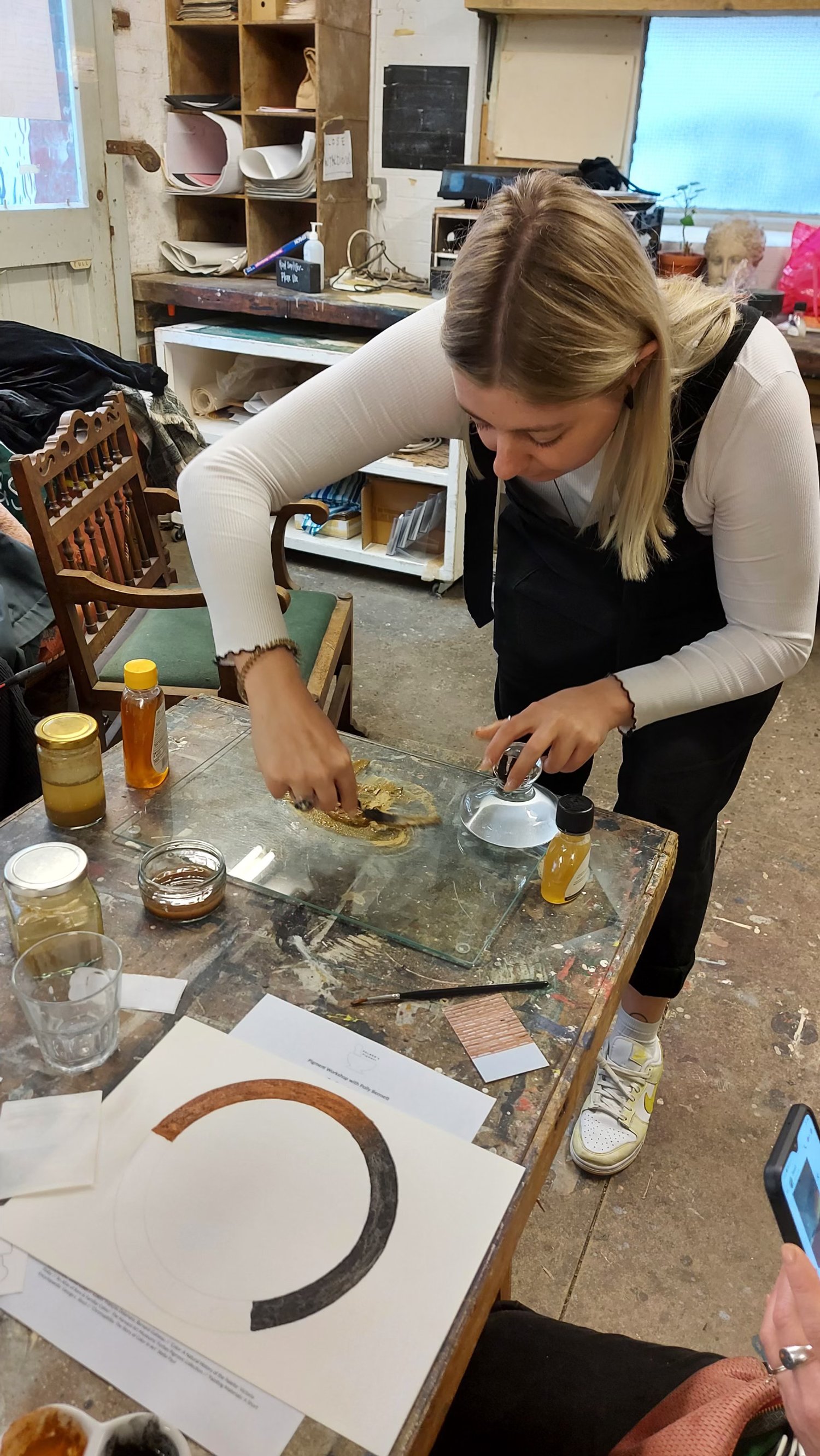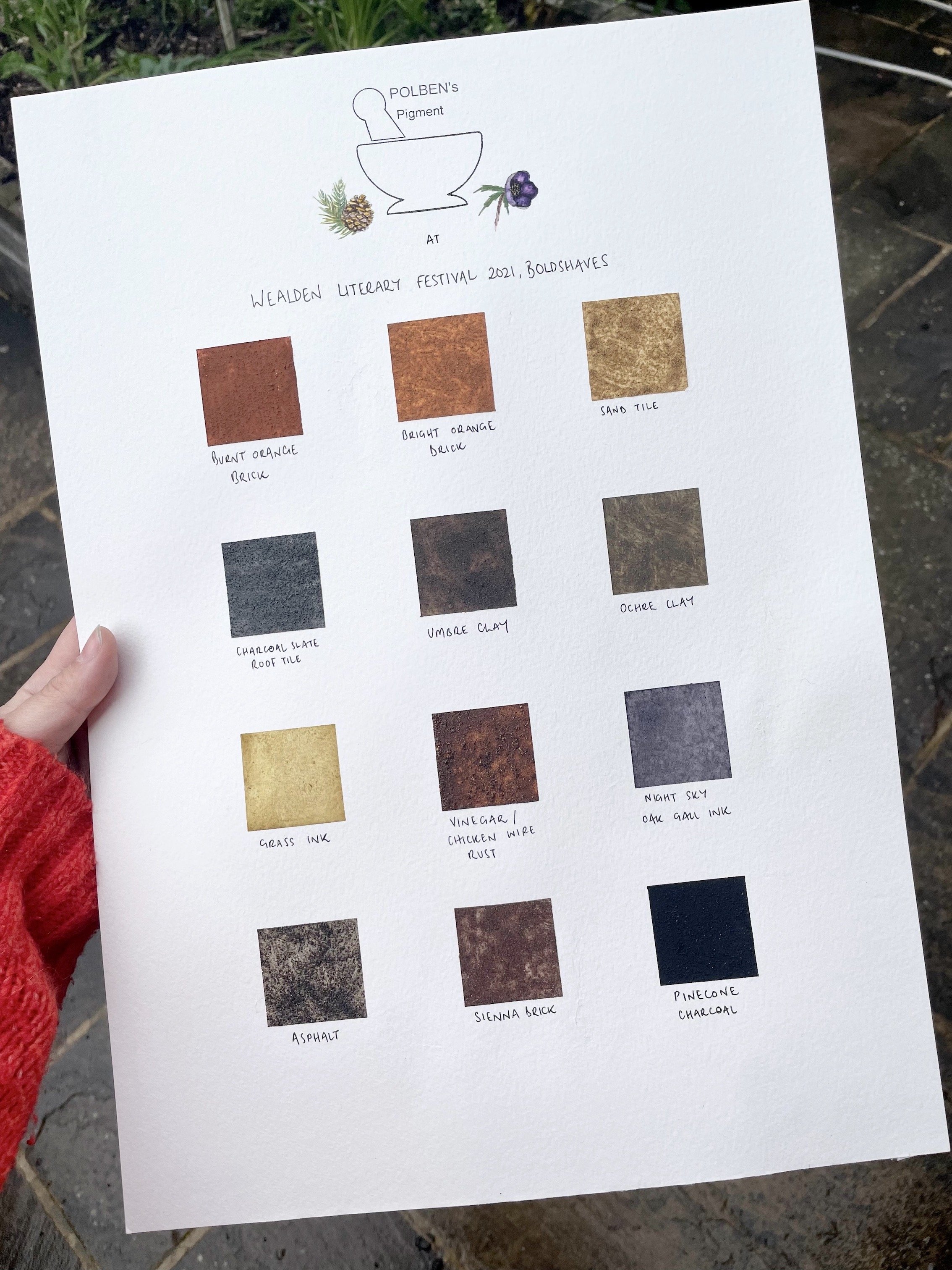Interview
Polly Bennett
Polly Bennett (b. 1996) is an environmental artist from Kent who lives in London.
She graduated from City & Guilds of London Art School in 2018 with a Bachelor of Arts in Fine Art, and in 2019 completed The Worshipful Company of Painter-Stainers Decorative Surfaces Fellowship. Subsequently, she is an Honorary Freeman of The Worshipful Company of Painter Stainers, and also a member of the Wilderness Art Collective, a group of creatives whose work discusses the natural world.
Bennett’s recent exhibitions include 'The Coral Reef Principle', Ursa Gallery, Bridgeport, Connecticut, USA, ART from HEART, ECOFeminism Festival 2020 ‘Utopia' Exhibition, Mile End, London, UK, Crown Shyness, SKT Spaces, The Halley Space, Hackney, London, UK, The Wealden Literary Festival, Boldshaves, Kent, UK, Pigments Revealed Symposium Online Exhibit, ’Restriction', Clayhill Arts, Somerset, UK, and ’Identity', The Holy Art (Online).
What is your name and background, and how did you start your journey in the art world?
“Since the age of 4, whenever I was asked what I wanted to be when I grew up, I always stated ‘artist’. The freedom creativity gave me as a child helped me to express myself, and the experimental nature of art constantly satisfied my inquisitive nature. Growing up I continued to study art in school, and eventually I moved to London for a Foundation Course and Bachelor of Arts Course, both at City & Guilds of London Art School.
My art practice developed, and during my second year of university it shifted to focus on the natural environment, where previously I had been a figurative artist. As I grew up in the countryside and travelled a lot as a youngster, moving to London for university was a big adjustment from the rural to the urban. So I began seeking out the green open spaces I had once taken for granted. This resulted in making mementos and representations of my surroundings.”
What inspires you?
“The natural environment is my biggest inspiration. Living in the countryside began a fascination with nature and the outside. For as long as I can remember, I have picked things up and built collections. In fact, I really have way too much stuff, and because of this it made sense to reuse, repurpose and recycle my finds in an artistic context.”
“The pursuit of my practice is to reduce the disconnect between myself and others, and the natural environment. I do this by showcasing what the Earth is built of and subsequently yields.”
How would you describe your work?
“My work explores the rural environments I find myself in. I portray the land, with the land, through traditional craftsmanship - using locally sourced materials in a process likened to alchemy. Combining a museological approach to materials with immediate observational responses, I collaborate with, and investigate my surrounding rural environment to re-visualise my experience, and create one for the viewer.
The concluding work recollects the explored environment like a souvenir, producing abstract, earthy and site-responsive results.”
What process, materials, techniques, etc., do you use to create your artwork?
“My practice uses a vast array of techniques and materials for both two-dimensional and three-dimensional works. I love learning, so I do in depth research for my projects and learn new skills and processes all the time.
The Worshipful Company of Painter-Stainers Decorative Surfaces Fellowship was an amazing opportunity to do just this. It extended my knowledge of, and allowed me to experiment with, important traditional craft, and surfaces - important because they are endangered or rarely seen - and I can bring them to the forefront of contemporary art.
This experience with historical methods also advanced my interest in sourcing and making my own natural color pigments. This involves using a mortar and pestle and the levigation process to purify natural materials such as minerals and bone into pigments. I now sell my own brand of artist pigments, POLBEN's Pigment, and teach Pigment Workshops throughout the UK. The pigments I keep for myself I use in my artwork as paint, pastels, and color agents in sculptural work. Honoring our world, I aim to cut out all synthetic and man-made pigments from my practice, decreasing my involvement in the carbon footprint of manufacturing paints.”



What artists influence you most?
“Artists that influence my work are generally environmentally or process focused. I particularly enjoy immersive work, such as that made by Olafur Eliasson or Anya Gallacio, as the works are a very explorative experience.
Other influential artists include Spencer Finch for his simple use of materials to represent environmental phenomena, Katie Paterson for her scientific enquiries and investigations into the environment, and Simon Linington for his readiness to utilise waste.
My all time favourite artist’s practice however, has to be Richard Long’s sensitive use of site-specific responses.”
What is your creative process like?
“My creative process is always ignited by objects I find outside in the natural world. It’s exciting to see how the object can be altered, dissected, or evolved through either craft processes or scientific experiments. I find the materials and properties of my found objects very telling, and they lead my practice, like a collaboration. The landscape offers up what it wishes me to see and we facilitate one another in making a new creation.”
What is an artist’s role in society and how do you see that evolving?
“The artist’s role is to open the mind of the viewer and to stimulate the senses. The use of technology has expanded the artist’s medium to explore further dimensions.”
Website: www.pollybennett.com
Instagram: @polben.art & @polbenspigment














